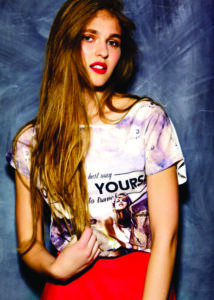Your clothes tell a story before you say a word. The colors, fabrics, and small details you choose shape how others see you. Even when you have a good sense of style, certain pieces can work against you without realizing it. Sometimes, the problem isn’t the price tag but the texture, fit, or lack of care. Recognizing items that make your outfit look cheap helps you take control of your image and refine your personal style without spending more.

Fabric Speaks Louder Than Labels

The quality of a fabric often reveals more about an outfit than its design. Low-grade textiles lose shape quickly, catch light awkwardly, or simply feel unpleasant to the touch. Thin cotton that clings to the skin, shiny polyester that looks almost plastic, or knits that stretch and sag after two washes — all these small details weaken an outfit’s impression. Even a stylish cut can look careless when the material feels cheap.
High-quality fabric doesn’t have to be expensive. It just needs structure and substance. Natural fibers such as cotton, linen, silk, or wool breathe well and age gracefully. They drape with quiet confidence. If you prefer synthetics for practicality, pick matte blends that mimic natural materials and hold their form. Touch the fabric whenever you can — your hands will tell you more than any label. If it feels stiff, rough, or unnaturally slippery, it will rarely look refined. Good fabric transforms simple clothing into something timeless.
When you build your wardrobe around durable materials, you also reduce waste. Clothes that last several years instead of several months save money and support a more sustainable lifestyle. Choosing well-made fabrics is one of the easiest ways to make your wardrobe look thoughtful and expensive, even on a budget.
Fit: The Silent Mark of Elegance
Nothing makes or breaks style as powerfully as fit. You can wear designer clothing and still look careless if the proportions are off. Sleeves that extend too far, trousers pooling around the ankles, or dresses that cling uncomfortably all create the same impression — imbalance. The human eye instantly notices when something doesn’t sit right.
Good fit is about balance, not perfection. A tailored silhouette follows your shape without restricting it. Clothes should move with you, not against you. A few small alterations — a shortened hem, a defined waistline, a narrower sleeve — can transform how you carry yourself. Tailoring turns mass-produced items into personal statements.
Learning your measurements is a smart investment. It helps you shop with precision and avoid impulsive buys that never truly fit. When your clothes fit perfectly, you automatically look more confident. That natural ease reads as elegance. Fit, more than price, defines how expensive your outfit appears.
Accessories: The Small Things That Speak Volumes 
Accessories can elevate or destroy an outfit in seconds. Large plastic jewelry, overdecorated handbags, or belts made from stiff synthetic leather often stand out for the wrong reasons. They catch attention but not admiration. Visible logos and shiny finishes, once trendy, now often make a look appear dated or overdone.
Think of accessories as punctuation marks in your outfit’s sentence. They should clarify, not compete. A structured handbag in beige, black, or caramel adds quiet strength. A thin gold chain or a pair of pearl earrings completes a look without shouting. It’s better to have three good accessories you love than ten that look tired after a month.
You don’t have to avoid creativity — just channel it. If you like bold accents, let them appear one at a time: a scarf with color, a pair of geometric earrings, or vintage sunglasses. Moderation shows taste. Accessories should whisper refinement, not demand attention.
Shoes That Ground Your Style
Footwear often decides whether an outfit feels complete. Worn heels, peeling soles, or shoes that squeak with every step ruin even the most elegant look. Cheap materials age fast, and everyone can see it. Faux leather with an unnatural shine or sneakers with uneven stitching instantly signal low quality.
Invest in shoes that last. Real leather, suede, or high-quality vegan alternatives breathe better and shape to your feet. A simple pair of loafers, ankle boots, or minimalist sneakers can match almost everything. Stick to neutral tones for versatility. The right pair of shoes adds balance, posture, and confidence.
Maintenance matters too. Polish your leather shoes, replace worn heels, and clean soles regularly. Store pairs with shoe trees or paper stuffing to keep their form. People often notice your shoes first — and once they do, they notice everything else.
When Trends Take Over
Fashion trends can be exciting, but they fade fast. It’s easy to fall into the trap of buying every new color, logo, or cut. Soon, your wardrobe fills with pieces that clash and date your style. Oversized prints, neon fabrics, or heavily ripped denim might look current for a moment, but they rarely stand the test of time. Overdoing trends is one of the most common items that make your outfit look cheap, even when the pieces were expensive.
To avoid this, combine modern and classic elements. A bold blazer looks great with a simple white shirt. Trendy jewelry pairs beautifully with clean, structured clothing. Limit trend-heavy purchases to one or two pieces per season and let your basics do the rest.
Building a wardrobe around timeless shapes and neutral shades gives you freedom. You can mix in trends when you like without ever feeling outdated. True style comes from consistency, not constant change.
The Art of Maintenance
Even the most luxurious wardrobe looks poor without care. Wrinkles, fading colors, or missing buttons instantly downgrade your outfit. Neglect is one of the easiest items that make your outfit look cheap — not because of what you wear, but how you treat it.
A little maintenance goes a long way. Steam or iron your clothes before wearing them. Use a fabric shaver to remove lint and pilling. Follow washing instructions — silk and wool require gentle cleaning, while denim lasts longer if you wash it rarely. Store delicate pieces in breathable covers and keep shoes in dust bags or boxes.
Small habits make a big difference. Ten minutes of care before an event can make a $40 dress look like it cost ten times more. Clean, pressed, well-kept clothes signal that you value quality and yourself.
 Building a Polished Wardrobe on Any Budget
Building a Polished Wardrobe on Any Budget
Elegance isn’t about owning more. It’s about making better choices. A capsule wardrobe of versatile, well-fitted pieces will always look more expensive than a closet full of fast fashion. Choose classic designs, good fabrics, and neutral colors. Add texture through linen, wool, or silk blends.
If your budget is limited, shop smart. Vintage and thrift stores often hide treasures — coats with real wool, handbags with sturdy hardware, or silk scarves in perfect condition. These pieces carry history and craftsmanship. Sustainable shopping not only saves money but also helps reduce waste. Quality lasts, and style built on quality never expires.
Your wardrobe should make you feel calm, confident, and comfortable. When each piece serves a purpose, getting dressed becomes easy. You stop chasing trends and start defining your own rhythm.
Confidence Is the Final Accessory
In the end, confidence completes every outfit. Clothes can enhance how you feel, but they can’t replace self-assurance. When your wardrobe fits your body and lifestyle, you walk differently. You look open, relaxed, and at ease in your own skin.
Confidence doesn’t mean perfection. It means authenticity — knowing who you are and dressing to reflect that. You can wear the simplest outfit and still look refined if you carry yourself with quiet self-belief. True elegance begins from within.
Recognizing items that make your outfit look cheap allows you to make intentional choices. Focus on fabric quality, perfect fit, and consistent care. Choose accessories that blend with your style instead of shouting over it. Keep shoes polished and clothing pressed. With thoughtful habits and a mindful approach to fashion, your wardrobe will reflect more than taste — it will reflect confidence, grace, and timeless elegance.
For more expert fashion insights, visit Vogue
Find Your Personal Style: A Guide to Dressing with Confidence

I’m Victoria, the creator behind Eva My Balance. Passionate about beauty, wellness, sustainable living, and mindful self-care. My mission is to inspire you to live consciously and beautifully—inside and out.



 Building a Polished Wardrobe on Any Budget
Building a Polished Wardrobe on Any Budget
